🔐 Understanding DIY Home Security Systems
In an era where technology permeates every aspect of our lives, safeguarding our homes has become more accessible and customizable.
DIY (Do-It-Yourself) home security systems have emerged as a popular alternative to traditional, professionally installed setups.
These systems empower homeowners to take control of their security by installing and managing devices such as cameras, sensors, and alarm3
s without the need for professional assistance.
The appeal lies in their flexibility, cost-effectiveness, and the ability to tailor the system to individual needs.
With a plethora of options available in the market, from basic setups to advanced smart home integrations, understanding the pros and cons of DIY home security systems is crucial for making an informed decision.
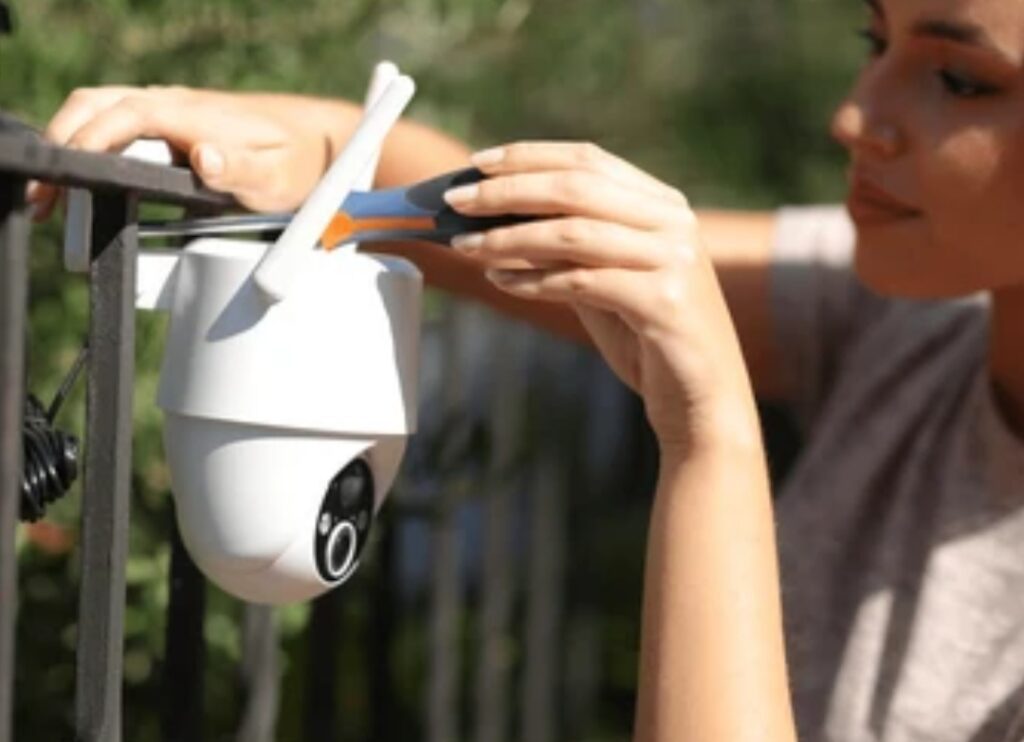
💡 The Rise of DIY Home Security
The surge in DIY home security systems can be attributed to several factors.
Firstly, the advancement in wireless technology has simplified the installation process, eliminating the need for complex wiring and professional setup.
Secondly, the growing awareness and concern for personal safety have driven homeowners to seek affordable and efficient security solutions.
Additionally, the integration of smart home devices allows for seamless control and monitoring through smartphones and other connected devices.
This trend reflects a shift towards personalized and proactive home security measures.
🎯 Purpose of This Guide
This comprehensive guide aims to delve into the pros and cons of DIY home security systems, providing you with detailed insights to help you determine if this approach aligns with your security needs and lifestyle.
We’ll explore various aspects, including cost implications, installation processes, system reliability, and potential limitations.
By the end of this guide, you’ll be equipped with the knowledge to make a confident decision about implementing a DIY home security system.
🔔 Ready to take control of your home’s security? Explore our in-depth analysis to discover if a DIY home security system is the right choice for you.
🛡️ Advantages of DIY Home Security Systems
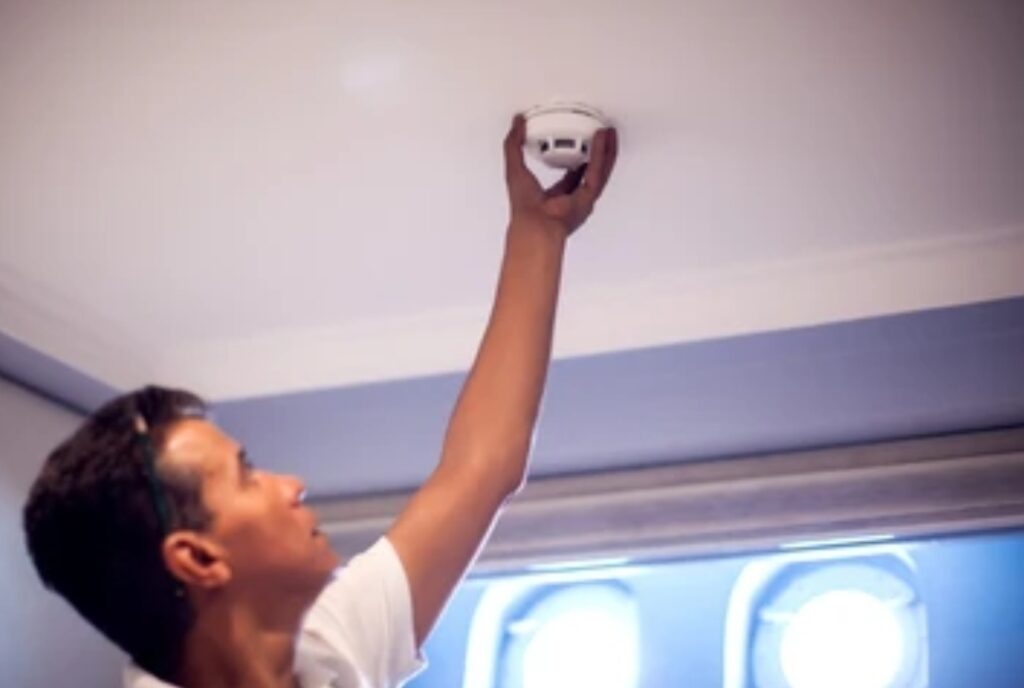
💰 Cost-Effectiveness of DIY Home Security Systems
One of the biggest attractions of DIY home security systems is their affordability compared to professionally installed solutions.
Traditional security systems often come with hefty installation fees, monthly monitoring charges, and sometimes even long-term service contracts.
In contrast, most DIY systems are sold as one-time purchases, with no hidden costs or recurring fees unless you opt for optional add-ons like cloud storage or professional monitoring.
You can start with a basic system and gradually expand it as your budget allows, making it a cost-effective option for homeowners, renters, and even small businesses.
Furthermore, the ability to install the system yourself eliminates the need to hire a technician, saving you hundreds of dollars in installation fees.
DIY systems often include everything you need right out of the box, including wireless cameras, motion sensors, and smartphone connectivity, making it easy to get started without expensive upgrades.
If you’re looking to secure your home on a budget, a DIY home security solution can offer excellent protection without breaking the bank.
🛠️ Easy and Quick Installation
DIY home security systems are designed for simplicity and speed.
Unlike professionally installed systems that may require days to set up and multiple visits from technicians, DIY systems can be installed in under an hour—no tools or technical expertise required.
Most systems today are plug-and-play with peel-and-stick sensors, pre-configured hubs, and user-friendly mobile apps.
Step-by-step instructions and video tutorials make it easy even for non-tech-savvy individuals to set everything up smoothly.
This flexibility means you can install your system on your schedule, without waiting days for an appointment or disrupting your daily routine.
It’s also perfect for renters, as many devices are non-invasive and can be removed without damaging walls or fixtures.
DIY systems allow you to customize placement of devices like door/window sensors and motion detectors to fit your specific home layout.
And the best part? You’re in complete control—from setup to ongoing adjustments.
🧩 Scalability and Customization Options
Unlike many traditional security systems that are limited in scope or require professional reconfiguration, DIY systems are incredibly modular and expandable.
Start with the basics—like a few door sensors and a central hub—and then add more features as your needs grow.
Most DIY home security brands allow you to integrate additional devices such as:
- Indoor and outdoor security cameras
- Video doorbells
- Glass break sensors
- Environmental monitors (for smoke, carbon monoxide, flooding)
- Smart locks and lighting systems
You can even connect your system to smart home ecosystems like Amazon Alexa, Google Assistant, or Apple HomeKit, offering voice control and full automation capabilities.
This level of flexibility allows you to create a tailored security solution that evolves with your home and lifestyle.
Whether you live in a one-bedroom apartment or a multi-story house, you can design your system to provide complete coverage without paying for unnecessary hardware.
If you’re someone who loves to have things just the way you want them, a DIY system offers endless possibilities for personalization.
🚚 Portability and Convenience
DIY home security systems are an ideal choice for renters, frequent movers, or military families.
Because they are typically wireless and self-contained, they can be easily packed up and moved to a new location without the need to uninstall hard-wired equipment or pay cancellation fees.
This portability offers a level of freedom that traditional security systems simply can’t match.
All you need to do is unplug your devices, take them with you, and reinstall them at your new home.
It’s as simple as moving your Wi-Fi router.
And because you manage the system yourself, there are no service disruptions or administrative hurdles when relocating.
For digital nomads or those in temporary housing, portability is not just a bonus—it’s essential.
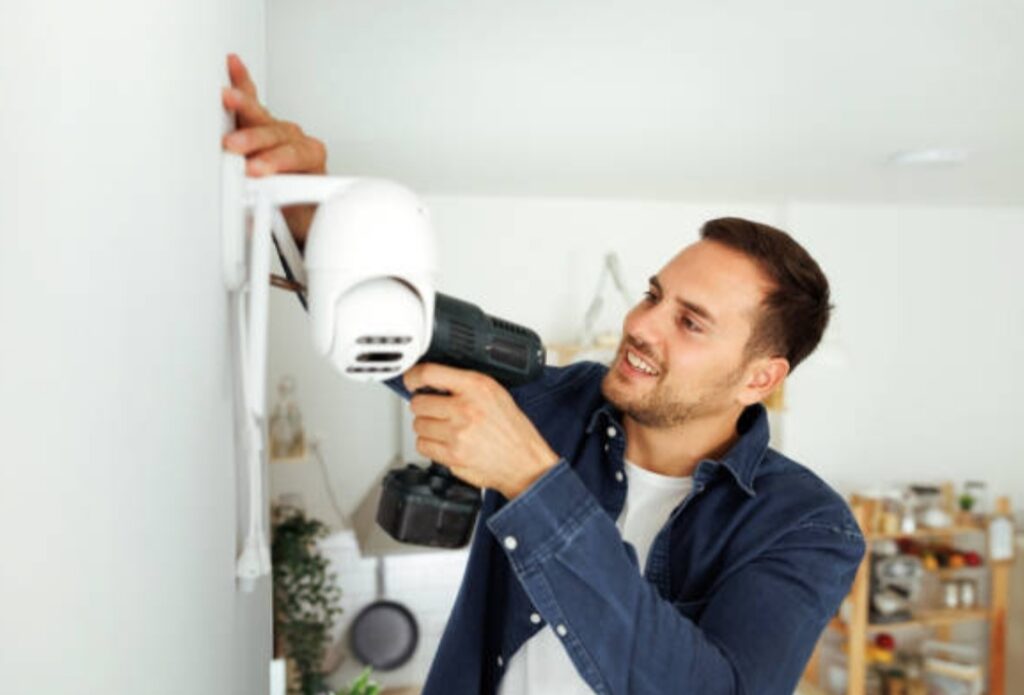
📲 Instant Alerts and Mobile Access
Today’s DIY home security systems come equipped with powerful mobile apps that offer real-time notifications and remote control.
Once your system is set up, you’ll be able to:
- Receive instant alerts when sensors are triggered
- View live footage from your cameras
- Arm or disarm your system remotely
- Get smart notifications for things like package deliveries or open windows
This means you can monitor your home from anywhere in the world, whether you’re at work, on vacation, or simply out running errands.
Some advanced systems also offer AI-powered detection, which can distinguish between people, animals, and vehicles—helping to reduce false alarms.
With DIY systems, you’re always in the loop, and you can take immediate action when something’s not right.
Remote control also adds an extra layer of convenience and peace of mind—because your home is just a tap away.
🧠 Full Control and Data Privacy
Another major advantage of DIY home security systems is the control they offer over your data and setup.
With many professional security companies, your system is tied to a centralized monitoring service—meaning your data, footage, and alerts are stored on their servers.
DIY systems, on the other hand, often give you the choice to:
- Store footage locally (via SD cards or private NAS servers)
- Use encrypted cloud storage with user-defined settings
- Decide who has access to your devices and information
This level of control can help protect your privacy, and for those who are tech-savvy, it opens the door to more secure and private smart home ecosystems.
For people concerned about surveillance or unauthorized access, this can be a critical deciding factor.
✅ Summary of Benefits of DIY Security Systems
To recap, here are the core advantages of choosing a DIY home security system:
- Budget-friendly with no installation or subscription fees
- Quick, easy installation with no technical knowledge required
- Highly customizable and scalable based on your needs
- Portable and renter-friendly
- Access from anywhere with real-time mobile alerts
- Greater control over privacy and security settings
These benefits make it clear why many homeowners are choosing to take security into their own hands with DIY home security solutions.
🔒 Want total control over your home’s protection—without the hefty price tag?
Explore these top-rated DIY security kits to get started today.
🚫 Disadvantages of DIY Home Security Systems
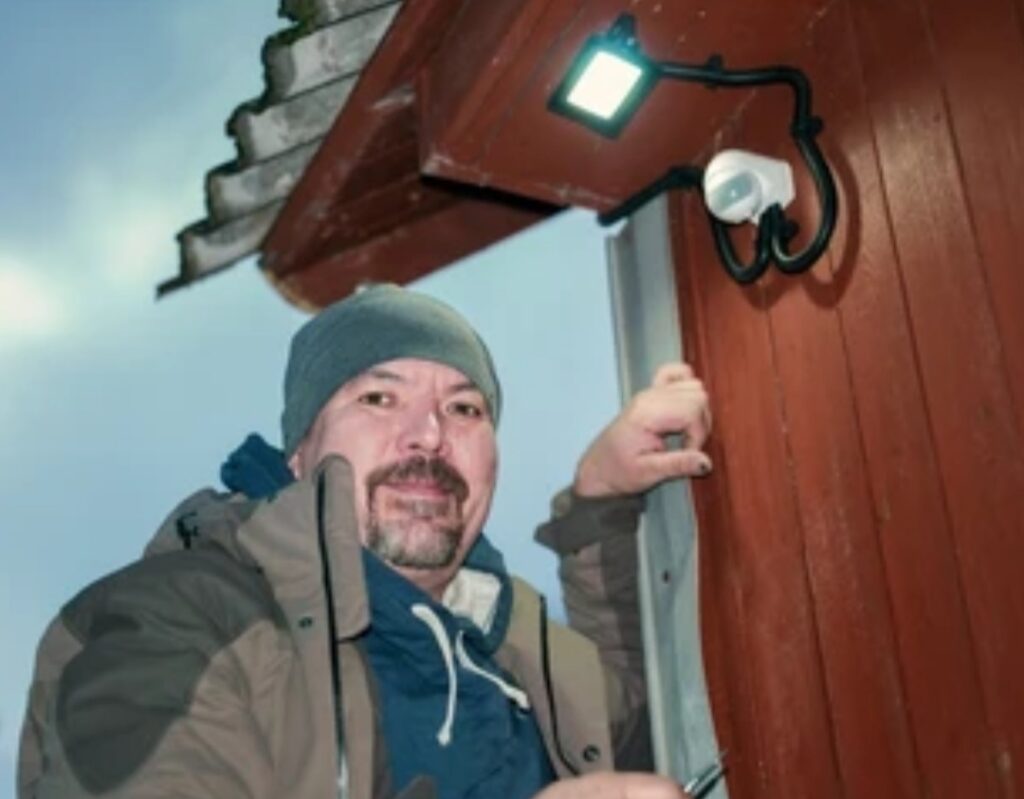
⚠️ Limited Professional Support
When you opt for a DIY home security system, you’re choosing to take full control of setup, maintenance, and troubleshooting.
While this can be empowering, it also means there’s no professional technician to fall back on when something goes wrong.
You are the installer, the troubleshooter, and the tech support.
If a sensor malfunctions or you encounter app errors, you’re often left digging through user forums, FAQ pages, or waiting on customer service chatbots.
And while many DIY brands offer decent online support, it’s rarely as responsive or effective as having in-person technical assistance.
For those who aren’t particularly tech-savvy, this could lead to misconfigurations, incomplete coverage, or even a false sense of security.
Without a trained professional assessing your home’s layout, you might miss vulnerable areas, install devices improperly, or fail to fully optimize your system.
🔌 Reliability and Power Source Concerns
Many DIY systems rely on Wi-Fi connectivity and battery power, which can be both a benefit and a potential pitfall.
If your Wi-Fi goes down or suffers from poor signal strength, your entire security system may become temporarily useless.
Additionally, battery-operated sensors and cameras require regular maintenance, including checking power levels, charging, or replacing batteries.
This hands-on upkeep can be easy to overlook, leading to inactive devices and a compromised security network.
Unlike professionally installed systems that often include hard-wired backup connections and centralized monitoring, DIY systems may lack redundancy features in case of technical failures or power outages.
If a criminal cuts your power or internet connection, and you don’t have backup cellular alerts or local recording, your system may be blind in the most critical moments.
🔕 Lack of 24/7 Professional Monitoring
One of the main trade-offs with DIY home security systems is the absence of round-the-clock professional monitoring—unless you pay extra.
Most DIY setups come with optional monitoring plans, but these are usually self-monitored by default.
That means you’re the one responsible for responding to alerts, checking your phone in the middle of the night, or deciding whether to call authorities.
While some DIY systems offer affordable third-party monitoring, the services may not be as robust or responsive as those provided by established security firms.
If you miss a notification while on vacation or during an emergency, critical time may be lost.
This is especially risky for those living alone, elderly individuals, or people with disabilities who may not always be able to react immediately.
For those who want complete peace of mind, the lack of integrated emergency response support could be a significant disadvantage.
🧩 Limited Integration with Advanced Smart Home Features
Although many DIY home security systems boast smart home compatibility, the integration isn’t always as seamless or feature-rich as advertised.
Some brands only support a narrow range of third-party devices, and others require additional hubs or subscriptions for full smart home integration.
This can be frustrating for users who already have an ecosystem of smart devices and expect full compatibility out of the box.
In contrast, professionally installed systems are often designed to integrate deeply with advanced home automation platforms, including custom triggers for lighting, thermostat, garage doors, and more.
DIY systems may only support basic routines like arming/disarming or camera activation—limiting the overall user experience.
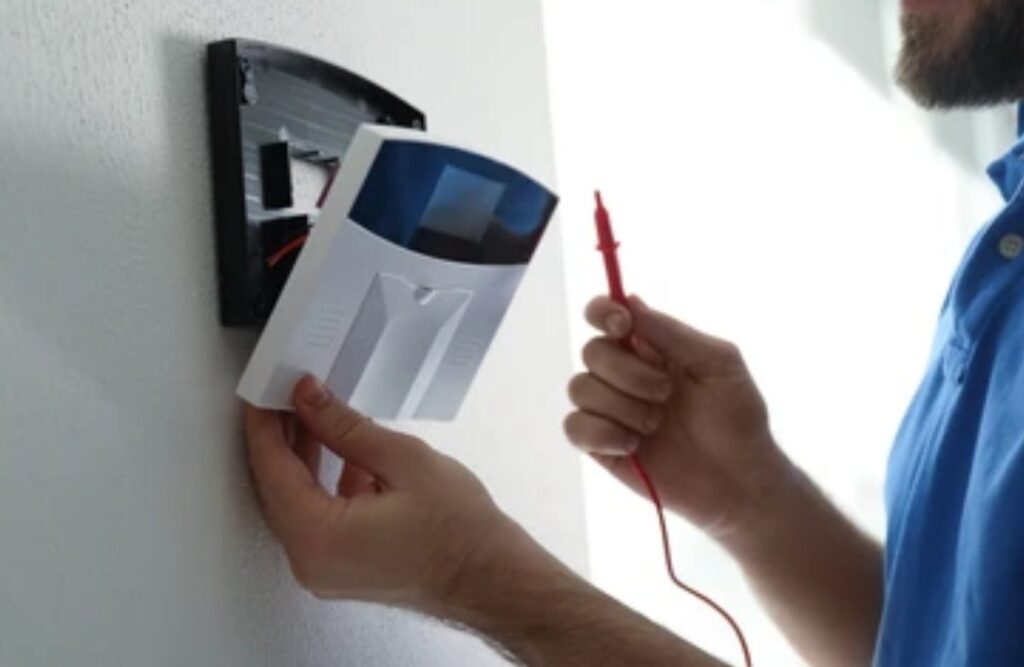
🧠 Potential User Errors and Misuse
Because you’re in control of installation and configuration, there’s always a risk of human error.
From misplacing motion sensors to failing to secure entry points properly, even small mistakes can create major vulnerabilities in your system.
For example:
- Cameras may not cover key blind spots.
- Motion detectors might be installed too high or too low.
- Window sensors may be placed where they can be bypassed.
Without professional guidance or a background in home security, it’s easy to underestimate what’s required for full perimeter protection.
Plus, managing notifications and setting correct alert rules can be tricky—resulting in false alarms that cause alert fatigue or missed alerts due to incorrect settings.
🔐 Risk of Overconfidence
This is an often overlooked but very real disadvantage.
Because DIY home security systems give a sense of control, users may fall into a false sense of security.
The belief that “I’ve installed it myself, so I know it’s solid” can lead people to lower their vigilance in other security practices.
But unless the system is comprehensively planned, regularly maintained, and correctly used, it can still leave your home vulnerable to threats like:
- Break-ins through unmonitored access points
- Tampering with wireless signals
- Device failure during crucial moments
Security should be multi-layered, and a DIY system, while helpful, is not a complete solution on its own.
🚫 Summary of Drawbacks of DIY Security Systems
To give you a clear view, here’s a breakdown of the main disadvantages:
- No professional installation or guidance, which increases the risk of poor coverage
- Dependence on internet and power, making systems vulnerable during outages
- Limited or optional professional monitoring, meaning slower emergency response
- Smart home integration may not be comprehensive
- High learning curve for optimal setup and configuration
- Risk of false alarms or missed threats due to user error
- May require ongoing attention and updates to remain fully functional
🚨 Think DIY is right for you? Or would a hybrid or professional system be safer?
👉 Compare your options with this side-by-side tool and protect your home smartly.
🏠 Comparing DIY and Professional Home Security Systems
In this section, we’ll help you understand the key differences between DIY and professional home security systems, so you can make a well-informed decision.
This in-depth comparison includes real-life considerations, detailed pros and cons, and essential factors like cost, setup, support, and reliability.
By the end of this section, you’ll know which system suits your needs best.
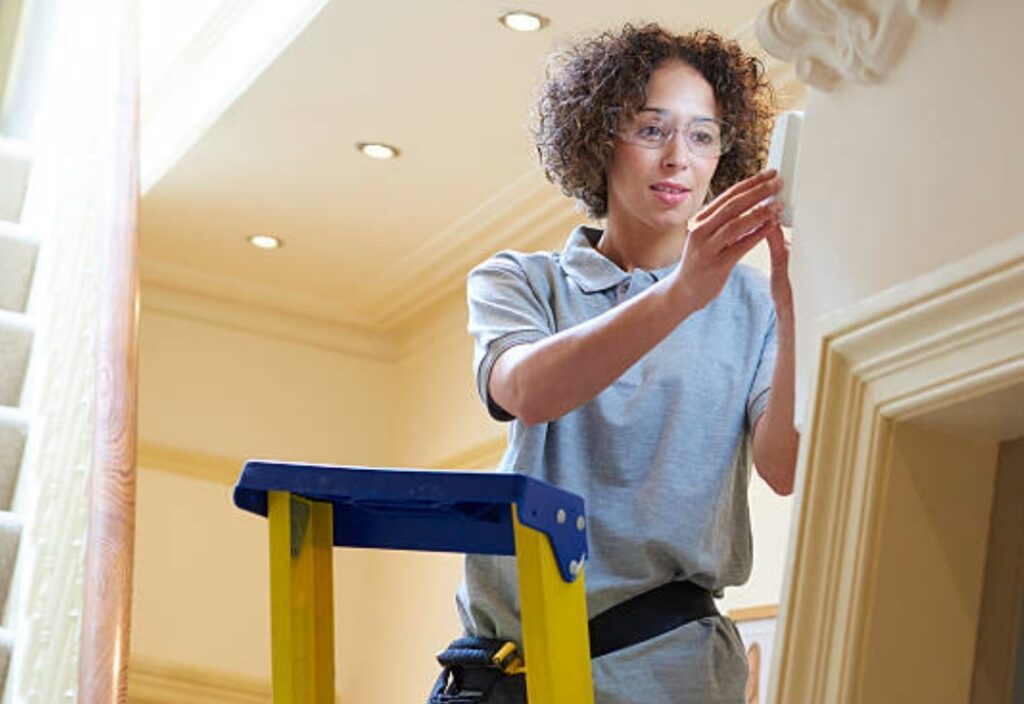
🛠️ Installation & Setup – How Hands-On Do You Want to Be?
DIY Home Security:
DIY systems are designed for easy self-installation.
You can typically set up motion detectors, cameras, sensors, and hubs using peel-and-stick methods or simple screws.
Most setups include step-by-step mobile app guidance and video tutorials.
There’s no need to drill holes or schedule appointments, and you can often have your system up and running in under an hour.
That flexibility appeals to renters, travelers, and tech-savvy homeowners.
However, mistakes in placement or improper setup may reduce coverage or create blind spots.
Professional Home Security:
Professional systems come with expert installation by trained technicians.
They perform onsite assessments, recommend ideal device placement, and ensure everything is connected securely and functioning properly.
This means you don’t need to worry about wiring, compatibility, or technical know-how.
You’re also less likely to leave gaps in your protection.
The downside?
Installation may require an appointment, someone to be home, and possibly a fee.
🧠 Takeaway: If you prefer convenience and confidence in your setup, professional installation wins. If you value flexibility and cost savings, DIY could be the smarter choice.
💸 Upfront Cost & Long-Term Fees
DIY Systems:
One of the biggest benefits of DIY security is affordability.
You buy the equipment upfront, usually with no monthly contract required.
Many brands like Wyze, SimpliSafe, and Ring offer full setups for under $300.
Professional monitoring is optional and usually ranges from $10 to $30 per month.
You can self-monitor for free if you choose.
Professional Systems:
Professional home security systems can cost significantly more.
Expect to pay for equipment, installation, and a monthly service contract, often with 1–3 year commitments.
Equipment alone may cost between $600–$2,000+, depending on features and coverage area.
Monitoring fees typically range from $30–$60/month, and cancellation may incur penalties.
However, those costs cover 24/7 monitoring, emergency response coordination, and system maintenance.
💡 Tip: Ask yourself — would you rather pay more for peace of mind or less for flexibility and independence?
🔐 Monitoring and Emergency Response
DIY Monitoring:
With DIY systems, you’re usually responsible for checking alerts and calling for help.
That means if you miss a notification while sleeping or traveling, no one else is watching your back.
Some systems offer affordable third-party monitoring, but it’s often limited in scope.
Professional Monitoring:
Professional systems offer 24/7 monitoring by trained agents.
They immediately contact emergency services if a break-in, fire, or carbon monoxide threat is detected.
This is crucial if you travel often, work night shifts, or have elderly family members at home.
Most services also provide verified video alerts, which helps reduce false alarms.
⚠️ Consider this: If instant emergency response is a priority, professional monitoring offers a stronger safety net.
🌐 Smart Home Integration
DIY Systems:
DIY home security systems often work well with smart assistants like Alexa, Google Assistant, and IFTTT.
Brands like Abode, Ring, and Arlo allow you to set up routines, turn on lights when motion is detected, and receive real-time phone alerts.
However, integration may be limited or require additional hubs depending on the brand.
Professional Systems:
High-end professional systems like Vivint and ADT also support smart home automation, and often go a step further.
They can integrate with thermostats, garage doors, smart locks, cameras, and lighting into one dashboard — offering a seamless experience.
But these systems may require custom hardware or service upgrades, which could increase costs.
🔌 Pro Tip: If you already have smart devices and enjoy tech DIY projects, a DIY system could be more compatible and affordable.

🧰 Maintenance and Support
DIY Systems:
You’re in charge of maintenance, battery replacements, troubleshooting, and software updates.
Most companies offer online support, FAQs, and chat, but you’re still your own technician.
This can be time-consuming and frustrating for less tech-inclined users.
Professional Systems:
Most providers offer ongoing support and maintenance, often included in the contract.
If something goes wrong, a tech is sent to your home to fix the issue — sometimes at no additional cost.
This is especially helpful if you’re not comfortable with tech or want reliable coverage 24/7.
🛎️ Support-wise: Professionals give you hands-free help, while DIY gives you total control — but with full responsibility.
🧾 Summary Table – DIY vs Professional Security at a Glance
| Feature | DIY Home Security | Professional Home Security |
| Installation | Self-installed, flexible | Installed by experts |
| Upfront Cost | Lower | Higher |
| Monthly Fees | Optional or low | Required and higher |
| Monitoring | Optional, self-monitored | 24/7 professional monitoring |
| Smart Home Integration | Moderate to strong | Strong but potentially more costly |
| Support | Limited (DIY support, forums) | Full technical and customer support |
| Best For | Renters, budget users, tech-savvy folks | Busy families, elderly, large homes |
🧠 Final Verdict – Which One Is Right for You?
If you’re asking, “What are the pros and cons of DIY home security systems versus professionally installed ones?” — the answer depends on your unique needs.
Choose DIY if you:
- Prefer flexibility and affordability
- Want to install the system yourself
- Don’t mind self-monitoring
- Live in a smaller home or apartment
- Are tech-savvy and comfortable with maintenance
Choose Professional if you:
- Want comprehensive security with no setup headaches
- Need 24/7 monitoring and fast emergency response
- Own a large home with complex layouts
- Live with elderly family members or young children
- Prefer white-glove service and full automation
👉 Ready to make your home safer today? Check out our top-rated DIY home security system here or explore professional security packages that fit your needs best
⚡ Don’t wait for a break-in to take action — your peace of mind starts now!
🧩 Factors to Consider Before Choosing a DIY Home Security System
Choosing the right security system for your home is a critical decision that affects your family’s safety, peace of mind, and even property value.
If you’re leaning toward setting up your own system, understanding the key factors to consider before choosing a DIY home security system is essential.
In this section, we’ll break down what you must evaluate before purchasing or installing a DIY setup—covering practical needs, tech compatibility, lifestyle fit, and futureproofing your investment.
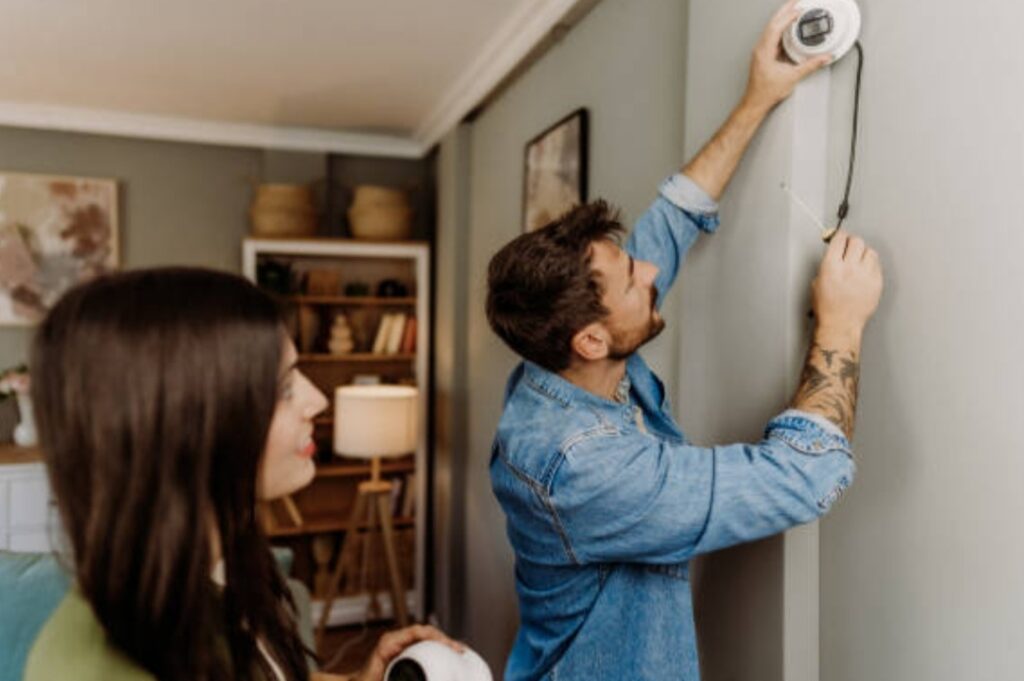
🔍 1. Size and Layout of Your Home
The size of your home plays a major role in determining what kind of DIY security system you need.
Larger homes may require additional cameras, window sensors, and motion detectors—along with a stronger Wi-Fi network for full coverage.
On the other hand, smaller apartments or condos can often be protected with a few simple components.
📐 Pro Tip: Always measure and map out your home’s layout before buying your system. Identify high-risk zones like back doors, garages, and blind spots.
📶 2. Wi-Fi Strength & Connectivity
Most DIY home security systems rely heavily on Wi-Fi connectivity to transmit data, send alerts, and enable real-time video streaming.
If your Wi-Fi is spotty or inconsistent, your system may underperform.
This is especially important for outdoor cameras or detached areas like garages.
💡 Consider upgrading your router or using mesh Wi-Fi extenders to strengthen signals in weak spots before installation.
🔋 3. Power Source: Wired vs Battery-Powered
DIY systems come in both battery-powered and wired options.
Battery-powered units offer flexibility and easy installation, but you’ll need to stay on top of battery life and replacements.
Wired systems may offer more reliable power, but they can be harder to install and may require tools or drilling.
🧠 Think about how often you’re willing to maintain the system. If you travel frequently, battery life could become a critical issue.
🔐 4. Monitoring Preferences
Ask yourself this:
Do you prefer to monitor the system yourself or pay for a 24/7 monitoring service?
Many people choose DIY setups because of the low-cost, self-monitoring options via mobile apps.
However, if you’re not always on your phone, this could leave you vulnerable.
Some DIY systems offer affordable professional monitoring plans, but they may not be as comprehensive as those offered by big security companies.
✅ If you want 24/7 peace of mind, look for DIY systems that provide optional, flexible monitoring packages.
🤖 5. Smart Home Compatibility
One major benefit of DIY systems is their ability to integrate with existing smart home devices.
Make sure the brand you’re considering works with assistants like:
- Alexa
- Google Assistant
- Apple HomeKit
- IFTTT or SmartThings
Also consider compatibility with smart lights, locks, thermostats, and garage openers.
🔌 Bonus Tip: Smart integration allows automation like “turn on lights when motion is detected,” which boosts your security and convenience.
📱 6. Mobile App Interface & Ease of Use
Most DIY systems are controlled through a smartphone app.
Look for one with a user-friendly interface, customizable alert settings, and remote access to cameras or logs.
An intuitive app can make the difference between using your system daily or letting it collect dust.
Check app ratings and reviews before purchasing.
📲 Look for features like geofencing, instant push notifications, and event history logs.
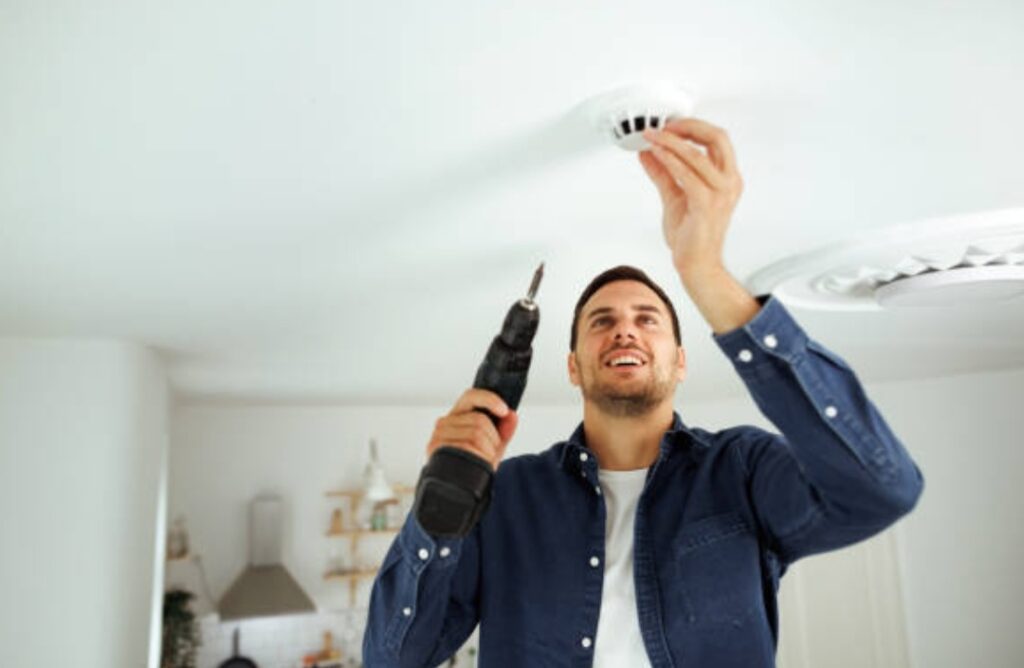
🛒 7. Budget & Long-Term Costs
Don’t just look at the upfront cost of a DIY security kit—factor in expansion costs, accessory upgrades, and optional monitoring fees.
DIY systems are affordable upfront, but if you plan to scale your system or subscribe to monitoring, it’s smart to budget for those expenses.
Some systems charge for cloud storage or advanced features.
💸 Make sure to compare brands side by side and look for hidden costs in monthly subscriptions, video storage, or replacement parts.
🧪 8. Brand Reliability & Customer Support
Not all DIY systems are created equal.
Some newer brands may offer slick features but lack long-term reliability or customer support.
Look for trusted names in the space like:
- Ring
- SimpliSafe
- Abode
- Arlo
- Eufy
Check how long they’ve been in business, what kind of customer support they offer, and what existing customers are saying in reviews.
🔍 Choose brands that offer live chat, 24/7 phone support, or detailed online help centers.
🔐 9. Expandability and Customization
Choose a system that can grow with your needs.
If you move to a bigger place or want to add new features, your system should be expandable.
Look for models that support add-on sensors, new cameras, or smart home gadgets.
Avoid closed systems that force you to replace everything if you want to upgrade.
🔄 Smart Choice: Go with modular systems that allow room-by-room upgrades.
🚨 10. Legal and Privacy Considerations
Before installing surveillance devices, especially outdoors or facing public spaces, research local laws and regulations.
Some states or countries restrict audio recording or require signage for video surveillance.
Also, choose systems with strong data encryption and two-factor authentication to protect against hacking.
⚠️ Your home security should protect your privacy — not put it at risk.
🧠 Recap: Questions to Ask Before You Buy
Here’s a checklist to guide your decision:
- ✅ Do I want self-monitoring or professional support?
- ✅ Is my Wi-Fi strong enough?
- ✅ Am I tech-savvy enough to install and troubleshoot myself?
- ✅ Does this system work with my smart home setup?
- ✅ Can I afford this system now and over time?
- ✅ Will this scale with my future needs?
🎯 Pro Insight: The best DIY system is the one that aligns with your lifestyle, technical comfort, and personal security needs. Carefully weighing these factors helps avoid surprises and ensures you get the most out of your investment.
👉 Ready to explore the best options available? Compare our top-rated DIY security system recommendations here — or discover exclusive discount offers from trusted brands.
💥 Don’t wait for a break-in to wish you had a plan. Act now to protect your home, loved ones, and peace of mind.
🛡️ Tips for Maximizing the Effectiveness of DIY Home Security Systems
Installing a DIY home security system is a great first step toward protecting your property—but simply setting it up isn’t enough.
To truly maximize its effectiveness, you need to go beyond the basic setup.
Whether you’ve just installed your system or are planning to, these expert tips will help you get the most out of your DIY home security investment.
By applying these strategies, you can turn a standard setup into a powerful, proactive defense system for your home.
Let’s explore what makes the difference between average protection and total peace of mind.
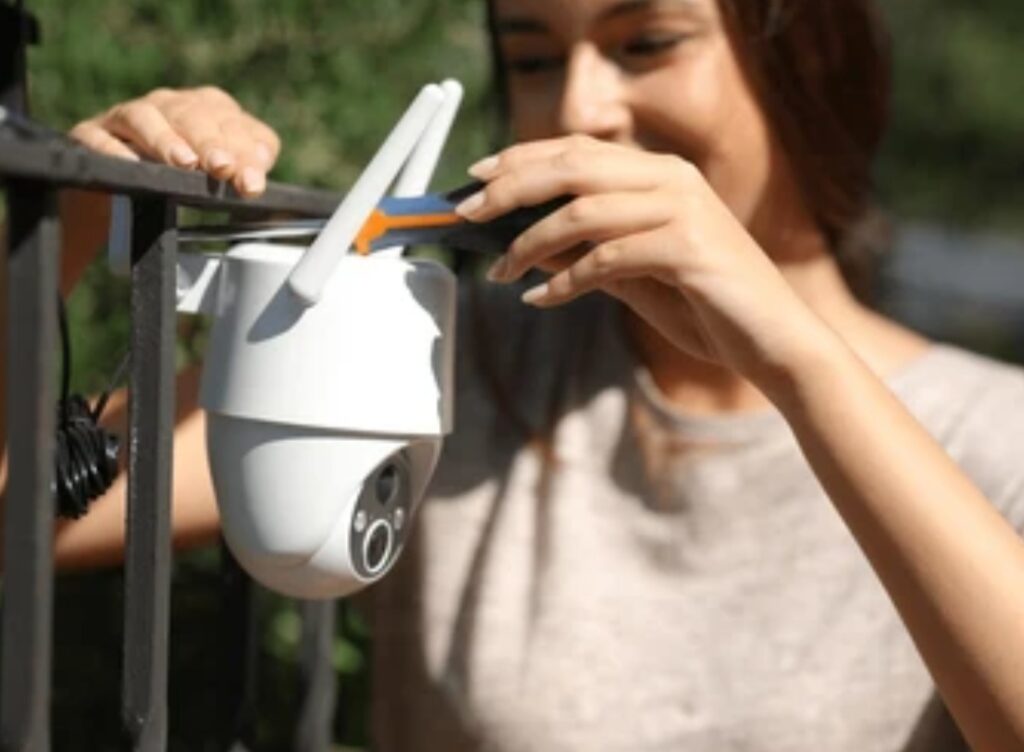
🎯 1. Conduct a Full Home Security Assessment First
Before setting up your system, take a walk around your home—inside and out.
Look for:
- Blind spots where visibility is low
- Dark entry points that lack lighting
- Weak locks or vulnerable windows
- Obvious hiding spots like bushes or sheds
📝 Checklist it! Write down every vulnerable area so you can strategically place your cameras, motion sensors, and alarms.
This pre-planning step dramatically improves your system’s coverage and effectiveness.
📍 2. Place Cameras & Sensors Strategically
Camera placement is one of the most crucial factors in ensuring your DIY security system does its job effectively.
Here’s where you should always install:
✅ Front door (35% of burglars use it!)
✅ Back door or sliding glass entry
✅ First-floor windows
✅ Garage entrances
✅ Driveway or walkway
✅ Common areas inside (kitchen, hallway)
Position cameras high enough to avoid tampering but angled down for maximum visibility.
🔄 Don’t forget to test the angle using the mobile app before finalizing placement!
📶 3. Strengthen Your Wi-Fi Network
Since most DIY systems rely on Wi-Fi, poor connection can result in laggy footage or missed alerts.
To boost security effectiveness:
- Use a mesh Wi-Fi system for wide coverage
- Place your router in a central location
- Consider a dedicated network for smart devices
- Use password protection and WPA3 encryption
💡 Hack Alert: Rename your network SSID to avoid giving away your device type (e.g., “Ring_cam_123” is a red flag for hackers).
🔄 4. Schedule Routine System Checks
DIY systems are easy to forget about once installed, but regular maintenance is critical.
Set reminders to:
- Test door/window sensors monthly
- Review camera angles after rearranging furniture or landscaping
- Replace low batteries
- Clear dust or debris from lenses
🧰 Tip: Most apps include test modes—use them!
This practice prevents silent system failures.
📱 5. Customize Notifications and App Alerts
One of the best parts of a DIY home security system is real-time notifications.
But too many alerts = alert fatigue (you’ll start ignoring them).
Here’s how to optimize:
- Customize which events trigger notifications
- Set time-based rules (e.g., turn off alerts during daylight)
- Use geofencing to arm/disarm based on your location
- Mute “pet triggers” if applicable
📲 Make sure your app is always updated for the latest features and security patches.
🧠 6. Enable Automation and Smart Integrations
To truly maximize your DIY system’s potential, link it to your existing smart home devices.
Some smart automation ideas include:
- Turning on lights when motion is detected
- Unlocking the door for trusted guests remotely
- Triggering sirens when a window sensor breaks
- Automating garage door closure at night
🔗 Most systems integrate with Alexa, Google Assistant, or Apple HomeKit.
Automation reduces response time and makes your home smarter and safer.
🔒 7. Use Signs and Stickers as Deterrents
While they might seem like gimmicks, visible signs and window decals do deter criminals.
Burglars often look for easy targets—knowing a home has a security system may make them skip yours.
🪧 Place signs near entrances and stickers on ground-level windows.
Even dummy cameras (in addition to real ones) can provide a psychological deterrent.
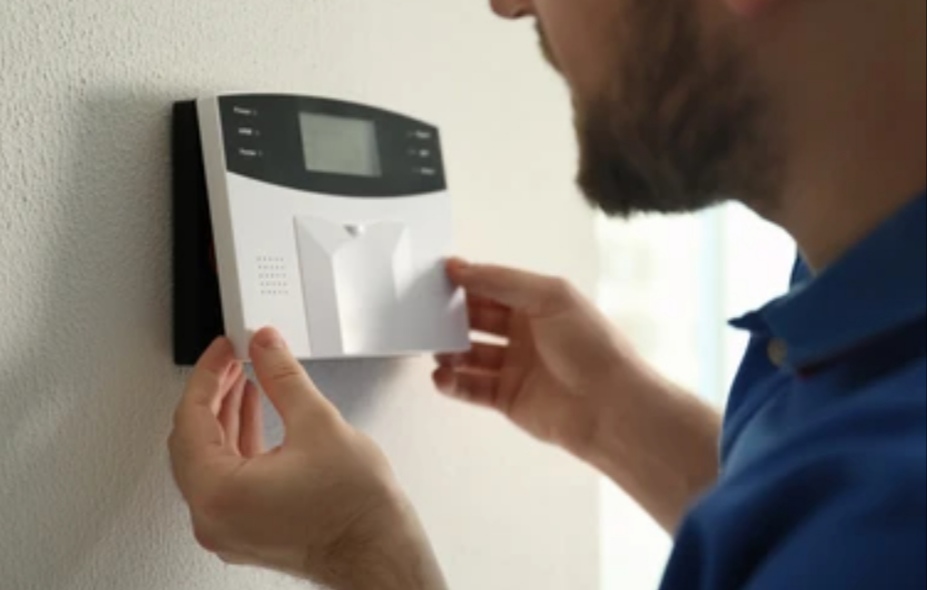
🧠 8. Educate Family Members
Even the best DIY system is useless if no one knows how to use it.
Make sure every member of your household knows:
- How to arm/disarm the system
- What to do in case of a false alarm
- How to respond to notifications
- Emergency contact numbers
👪 Kids and elderly family members especially need guidance and practice using the system.
🔐 9. Enable Multi-Factor Authentication (MFA)
Hackers often target poorly protected home systems.
Always enable MFA (multi-factor authentication) for your mobile app and user account.
This adds an extra layer of protection in case your login is compromised.
🔑 Use strong, unique passwords and never share login info with non-household members.
🛠️ 10. Update Firmware Regularly
Outdated software creates vulnerabilities.
Manufacturers often release updates to patch bugs, fix performance issues, or improve features.
⚠️ Schedule monthly checks or allow auto-updates where available.
Neglecting updates can lead to gaps in security that intruders can exploit.
💡 11. Keep Backup Power Options Handy
In a power outage or network failure, some DIY systems may shut down.
Make sure your setup includes:
- Battery backups for base stations
- Solar-powered outdoor cameras
- Cellular backup (for professional monitoring systems)
🔋 This ensures your home stays protected even when the lights go out.
✅ Quick Recap – DIY Home Security Optimization Checklist
Here’s your action plan to get the best performance from your DIY system:
✔️ Conduct a full home assessment
✔️ Place devices strategically
✔️ Strengthen your network
✔️ Customize your app alerts
✔️ Use smart integrations
✔️ Update your system regularly
✔️ Educate your family
✔️ Secure your digital access
✔️ Use deterrents (signs/stickers)
✔️ Have backup power plans
🎯 Final Tip: A DIY system is only as strong as the effort you put into maintaining and optimizing it.
If you’re going to install it yourself, take full control and commit to managing it smartly.
🔥 Ready to upgrade or add new gear? Browse our list of Top-Rated DIY Security Accessories Here or grab exclusive discount deals on DIY camera bundles!
❓ Frequently Asked Questions (FAQs)
To help you make informed, confident decisions about your home’s safety, here are answers to the most commonly asked questions about DIY home security systems.
Whether you’re new to home protection or comparing your options, this section provides clear, helpful answers to questions real users ask.
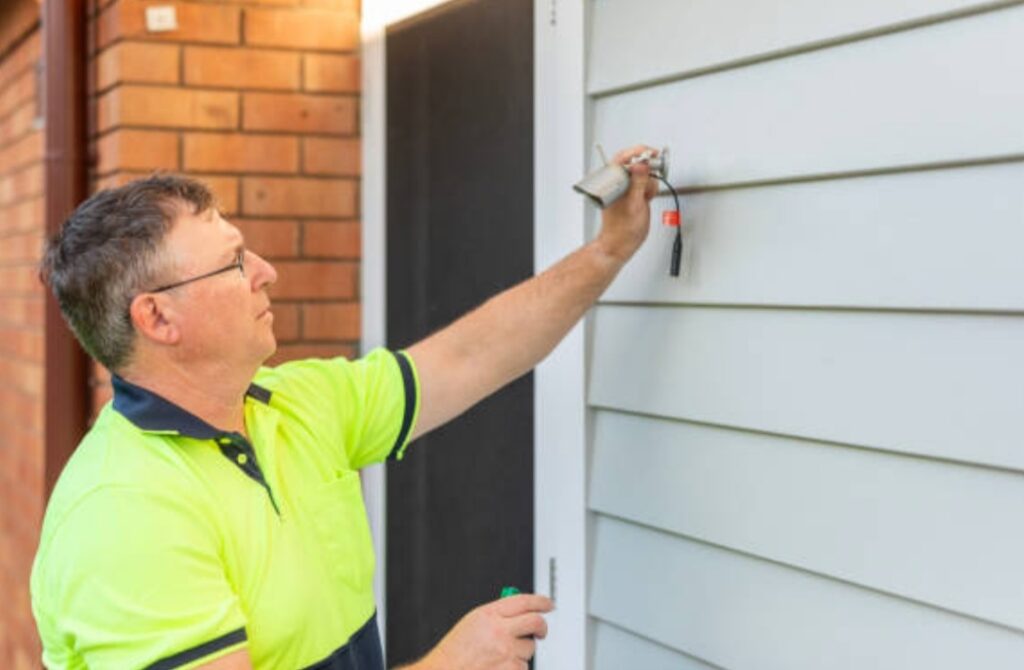
🔍 Are DIY home security systems as reliable as professional systems?
Yes — but with caveats.
Many modern DIY home security systems offer the same core features as professional systems, including HD cameras, motion detection, smart alerts, and remote access.
However, the reliability depends on:
- Your installation accuracy
- Your network stability (Wi-Fi)
- Whether you perform regular maintenance
Professional systems often include 24/7 monitoring and professional-grade equipment, while DIY systems rely on you to manage and monitor them.
If you’re tech-savvy and diligent, a DIY system can be just as effective as a professionally installed one—at a fraction of the cost.
🧰 What equipment do I need for a DIY home security system?
A basic DIY home security system should include:
- A central hub or base station
- Entry sensors for doors and windows
- Motion detectors
- Indoor/outdoor security cameras
- A loud siren or alarm
- A mobile app for remote access
Optional add-ons include:
- Video doorbells
- Glass-break sensors
- Smart locks
- Smoke and carbon monoxide detectors
- Smart lights
Tip: Look for expandable systems that let you add more devices over time.
💸 What are the pros and cons of DIY home security systems?
Great question
Here’s a quick breakdown:
✅ Pros:
- Lower upfront and ongoing costs
- Easy to install — no technicians required
- Flexible customization
- Immediate control through mobile apps
- No long-term contracts
❌ Cons:
- No professional installation or setup
- Monitoring is usually self-managed unless you pay extra
- More prone to user error (poor camera placement, missed updates)
- Limited customer support
Learn more in our full breakdown above in the Pros and Cons of DIY Home Security Systems section.
📶 Do DIY security systems work without Wi-Fi?
Most DIY systems rely heavily on Wi-Fi for connectivity and remote access.
Without Wi-Fi, features like:
- Real-time alerts
- Cloud video storage
- App control
…won’t work properly.
Some systems offer:
- Local storage (e.g., SD card in the camera)
- Cellular backup modules (usually a paid add-on)
If your home has spotty Wi-Fi, you may need a Wi-Fi mesh system or a hybrid security system that includes local recording and limited offline features.
🧠 How hard is it to install a DIY home security system?
Installation is usually very simple, especially with modern kits.
Most setups are:
- Wireless (no drilling or rewiring)
- Plug-and-play
- Controlled via an easy-to-use mobile app
- Guided by step-by-step in-app tutorials
You can often install a basic system in under 60 minutes, even if you’re not tech-savvy.
However, advanced placement planning (for cameras, sensors, etc.) still requires some attention and know-how.
📲 Can I monitor my DIY system remotely?
Absolutely!
Remote access is one of the top reasons homeowners choose DIY security systems.
Using your system’s mobile app, you can:
- View live camera feeds
- Arm/disarm your system
- Receive motion detection alerts
- Review video history
- Control smart home integrations
Most systems also support push notifications, email alerts, and even two-way audio, depending on your setup.
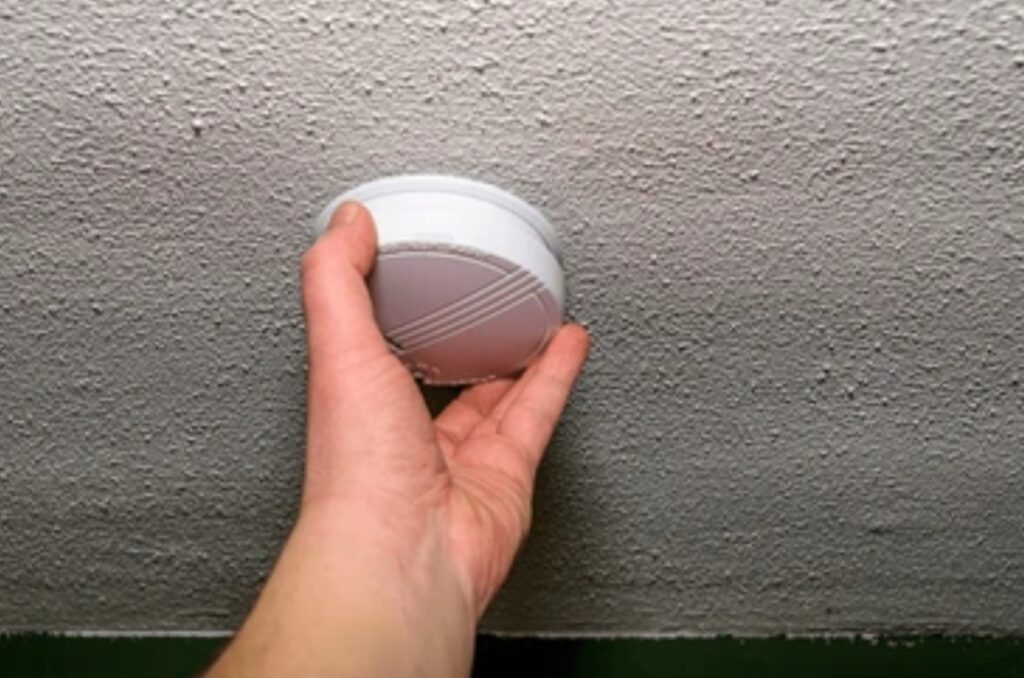
🔐 Can my DIY security system be hacked?
Like any smart device connected to the internet, yes, DIY systems can be vulnerable if you don’t take proper precautions.
Here’s how to reduce your risk:
- Use strong, unique passwords
- Enable two-factor authentication (2FA or MFA)
- Regularly update firmware and apps
- Avoid using default usernames or open networks
- Disable unused accounts or features
Choose systems from reputable brands that prioritize security encryption and privacy.
💭 Should I choose a DIY or professional home security system?
It depends on your needs, budget, and preferences.
Choose DIY if:
- You want affordable, contract-free protection
- You’re comfortable installing and managing your system
- You prefer flexibility and control
Choose professional monitoring if:
- You want hands-off setup
- You need police or fire department dispatch during emergencies
- You’re looking for high-level equipment and 24/7 support
👉 We cover this in full detail above under Comparing DIY vs. Professional Security Systems.
📅 How often should I maintain or update my system?
At least once a month, do the following:
- Check for firmware or app updates
- Test motion sensors and entry alerts
- Clean lenses and inspect wiring
- Replace batteries as needed
Bonus Tip: Enable auto-update options to stay secure without manual checks.
✅ Final Thoughts on DIY Home Security System FAQs
We hope these answers have cleared up your biggest questions!
Understanding the pros and cons of DIY home security systems is key to choosing the best protection for your home.
The more informed you are, the more confident you’ll be in securing what matters most.
💥 Ready to build your perfect DIY system? Check out our curated list of Top DIY Security Kits Here or save big with exclusive discounts and promo bundles today!
✅ Conclusion:
In today’s fast-paced, tech-driven world, home security is no longer a luxury — it’s a necessity.
Thanks to the rise of smart technology and affordable devices, DIY home security systems have become a powerful solution for homeowners looking to protect their property, family, and peace of mind — all without the high costs and contracts associated with traditional systems.
Throughout this article, we’ve explored the pros and cons of DIY home security systems, compared them with professionally installed systems, and provided insider tips to help you get the most value and performance out of your setup.
Let’s quickly recap the most important insights:
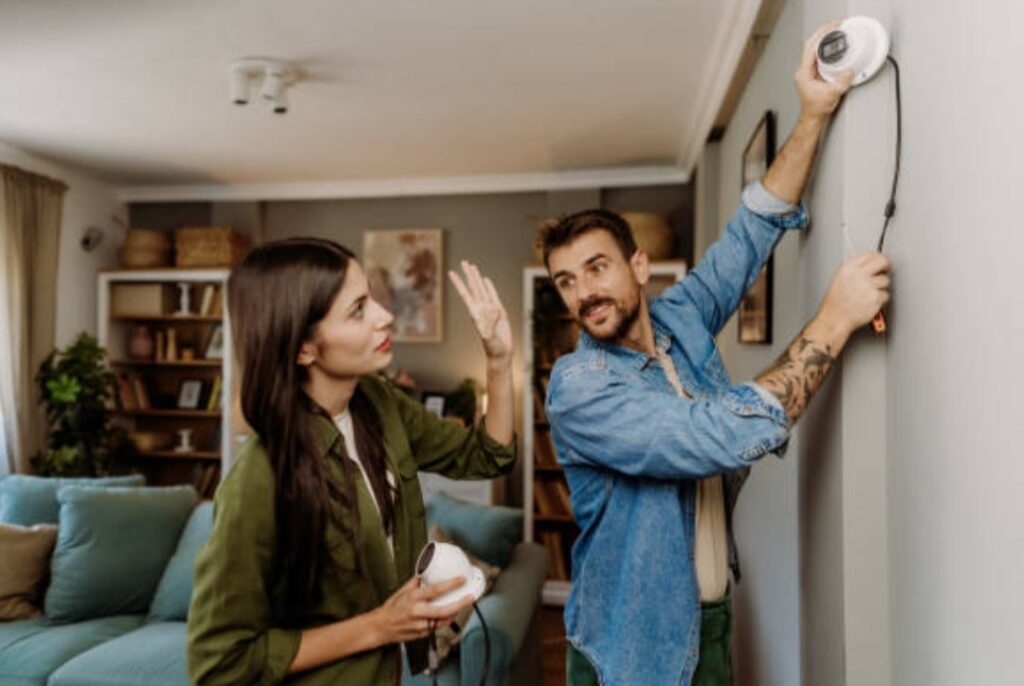
🟢 The Benefits of DIY Home Security Systems:
- ✅ Affordable and cost-effective
- ✅ Easy to install — no professional required
- ✅ Customizable to your unique needs
- ✅ No long-term contracts
- ✅ Remote access and smart home integration
🔴 The Downsides to Consider:
- ❌ May lack 24/7 professional monitoring (unless paid)
- ❌ User error can affect effectiveness
- ❌ Relies heavily on stable internet connections
- ❌ Limited support for complex setups
🤔 So, Are DIY Home Security Systems Worth It?
Absolutely — if you value flexibility, control, and cost savings.
For many homeowners and renters, the ability to set up a reliable, expandable system on their own terms — without being locked into a contract — is a game-changer.
However, if you’re someone who prefers a hands-off, professionally monitored solution, or if you live in a high-risk area, then a hybrid or pro-installed system might be a better fit.
Ultimately, the best security system is the one that fits your budget, lifestyle, and peace of mind.
🔐 Pro Tip: Don’t rush the decision.
Take time to evaluate your home’s layout, your personal security needs, and how much tech-savviness you’re comfortable with. Review our top DIY security system recommendations to find one that suits your needs and offers the best balance of cost, features, and reliability.
💥 Final Call to Action
Your home deserves protection — and you deserve confidence.
If you’re ready to take control of your home’s safety without breaking the bank, now is the time to explore the best-rated DIY home security systems and secure exclusive discounts or starter bundles.
👉 Don’t wait until it’s too late — protect what matters most, starting today.
💡 Want help picking the best DIY security system for your home?
Check out our hand-picked product reviews and comparison guide here – complete with pros, cons, and buying tips!
You might also like :
